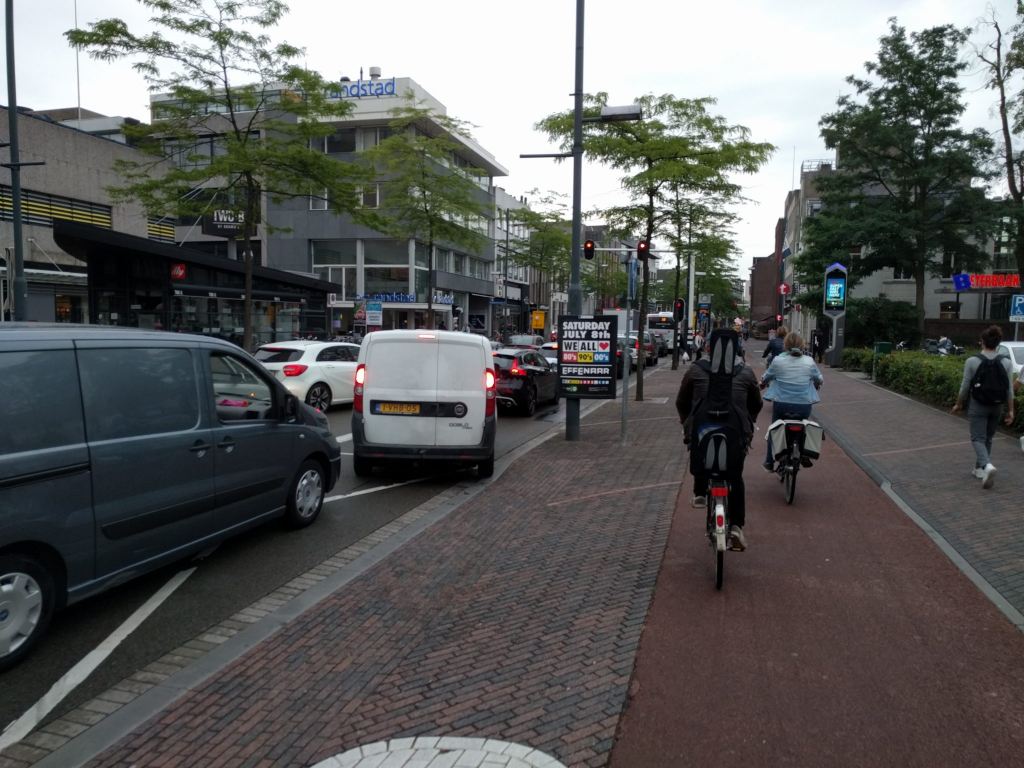

All around the world, initiatives are arising to make cities smarter, more accessible and at the same time more sustainable. Eindhoven doesn’t seem to lead in this type of “Quality of Life” and that is the reason for E52 to dive into this topic in the run-up to the municipal elections of March 2018. What are the backgrounds, what is achievable, what is minimally necessary, where are the solutions? Today, Ernest Maas, Brede Beweging Linksom, shares his vision. Comments are welcome, both under this article and in separate contributions. Read all the contributions in this series here.
By Ernest Maas
Eindhoven has been dealing with a bad air quality for years. Measurements have shown that in different places in the city it is ‘unhealthy’ to live. There are several causes for this bad air, but one of the main causes is the traffic in and around Eindhoven, especially the older polluting diesel and two-stroke moped scooters.
The Eindhoven political party BBL (Brede Beweging Linksom) has frequently asked for attention for this and will continue to do so. BBL primarily wants an extension of the current environmental zone. This currently only applies to the part inside the inner ring road and half of this zone isn’t being controlled. BBL wants to expand the environmental zone to the whole city and amplify it with a ban on older polluting diesels in 2025. These are, apart from lorries, also passenger and delivery cars that drive on diesel and first got a license plate before January 1st, 2001. Motorists should be able to check this with a simple license plate check.
By 2020, BBL wants an entire ban on two-stroke moped scooters. These will have to be replaced by electrical scooters.
To improve the air quality and make room for cyclists and pedestrians in the center, freight traffic can be limited by setting up a city distribution system. For this purpose, distribution centers are set up on the edge of Eindhoven where suppliers deliver their products. From these centers, products are spread around the center with electrical distribution cars.
BBL also supports the introduction of speed limits on, for example, the Kennedylaan and the inner ring road. Research has shown that the emission of harmful substances reduces if traffic drives more slowly. The maximum speed on these roads can be brought back to 50 km/h.
In terms of public transport, Eindhoven is doing well by using more and more electrical buses and prioritizing taxi companies that use electric cars. BBL thinks this is a good development and will support this as much as possible. BBL also believes in a good public transport network in the city and supports the plans around the High-Quality Public Transport section. However, this should not be at the expense of the so-called unprofitable lines. In Eindhoven, you must be within a reasonable walking distance from a station. BBL thinks 500 meter is reasonable, except for senior or nursing centers. For these centers, a station has to be placed as close to the entrance as possible and BBL says that 100 meter is the maximum.
If we’re looking at another big polluter in the region, we would be looking at Eindhoven Airport. Under the current circumstances, the limit of growth of this airport has been reached for BBL. Only when more sustainable (air pollution) and more silent (noise disturbance) airplanes are used, any further growth can be discussed for BBL. BBL also supports the initiatives to end flights after 11 pm and on the weekends, flights before 8 am. This allows local residents to enjoy their night’s sleep.
Lastly, BBL finds the investments in the public green very important. The green is not only the lungs of the city but also cleans the polluted air. In short, BBL wants more green and less brick in the city.

